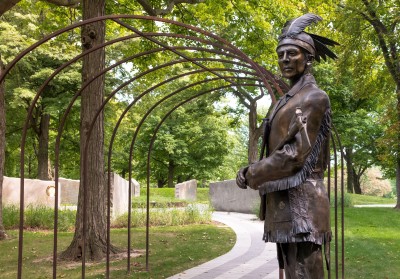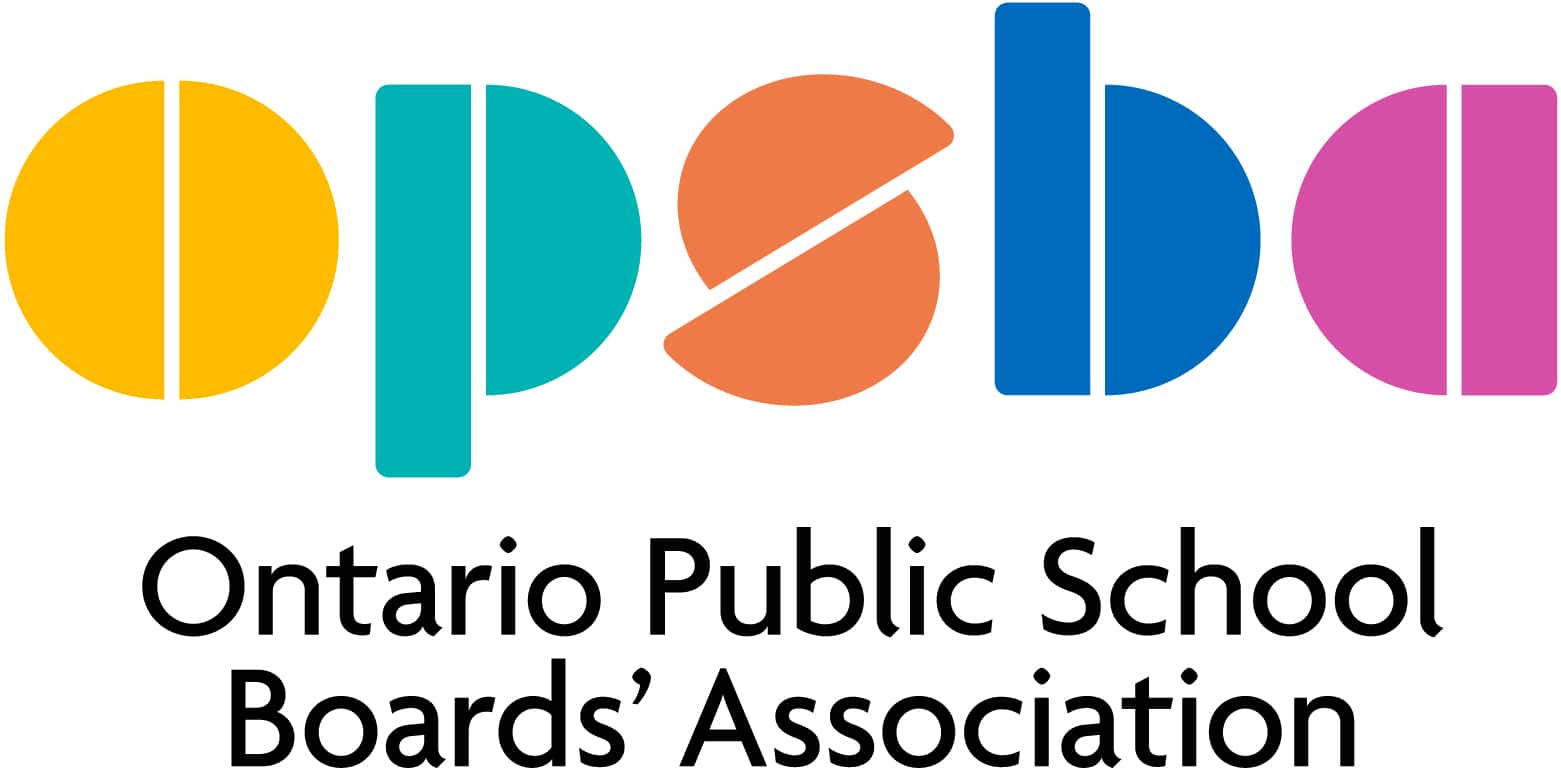District School Board of Niagara
DSBN Continues Journey Towards Reconciliation with Indigenous Education Initiative
By Brett Sweeney, DSB of Niagara
 Photo Credit: Courtesy of Spencer Coombs, DSBN |
The statues of Six Nations war captains John Norton and John Brant stand as silent sentries watching over the Landscape of Nations Commemorative Memorial at Queenston Heights in Niagara-on-the-Lake.
Opened in 2016, the Landscape of Nations Commemorative Memorial is a fitting tribute to the oft overlooked contributions of Indigenous peoples’ contributions to repelling American forces in the War of 1812. Features of the sprawling memorial include the war captains, a representation of the traditional Haudenosaunee longhouse, a memory circle of eight limestone walls emblazoned with markers identifying members of the Six Nations, and an eastern white pine which stands as a symbol of the Haudenosaunee constitution known as the Great Law of Peace.
Just as Norton and Brant mark the entryway to the physical landmark, the Landscape of Nations memorial serves as a doorway to students’ greater understanding of and respect for Indigenous people in Canada.
To support the development of age and culturally appropriate curriculum for students in Niagara, the District School Board of Niagara joined with the Landscape of Nations 360˚ and the Woodlawn Cultural Centre as the founding educational partner in the Indigenous Education Initiative.
“The DSBN is pleased to partner with the Landscape of Nations 360˚ project to support both teacher and student learning in this critical area,” said Warren Hoshizaki, Director of Education, District School Board of Niagara.
“As a learning institution, we believe education has a tremendously important role to play in fostering understanding, respect, and promoting Indigenous pride and healing.”
This professional development program for teachers will be based on the Ten Essential Understandings about Indigenous Peoples of the Niagara Region, created by the Landscape of Nations team of scholars, historians, and Indigenous culture and language specialists.
“This informational resource highlights important themes and concepts that educators need to understand so they can effectively teach students about Indigenous history while fostering critical thinking skills,” said Ronda Menard, DSBN Indigenous Education Consultant.
By supporting teaching that is culturally appropriate and historically accurate, the goal is to foster a climate where Indigenous students thrive and non-Indigenous students can appreciate the proud legacy of First Peoples and see how their teachings informed the development of this nation.
“Landscape of Nations 360˚ supports educators in their earnest efforts to better understand the histories, knowledge and perspective of Indigenous peoples in an effort to provide a more complete and thorough education to their students,” wrote Tim Johnson, Director, Landscape of Nations 360˚ in the Indigenous Education Initiative booklet.
In the 2019-20 school year, the DSBN will seek input on the teaching and learning components of the program from the Landscape of Nations 360˚ team, DSBN Curriculum Support Services, and a group of educators. Feedback will be used to refine and enhance the program for teachers.
JoAnna Roberto, DSBN Superintendent of Curriculum and Student Achievement, said this initiative supports the DSBN’s journey towards reconciliation. As part of its recommendations, Canada’s Truth and Reconciliation Commission called on various governments in Canada to maintain a commitment to Indigenous education issues. The Indigenous Education Initiative aligns with the commission’s recommendations to develop and implement curriculum and learning resources on Indigenous peoples in Canadian history and to identify teacher-training needs.
“The DSBN is committed to being an active partner in the reconciliation process,” said Hoshizaki. “I offer my sincere thanks to everyone who contributed to the development of this curriculum, to those who will deliver it, and to our students who will engage with it and become ambassadors for truth, understanding, and a more equitable society.”
| Previous Article | Next Article |

